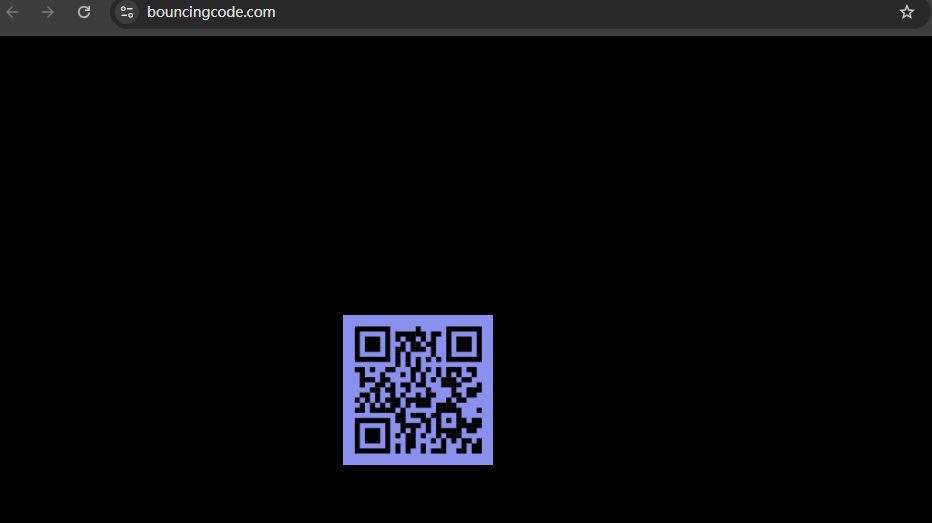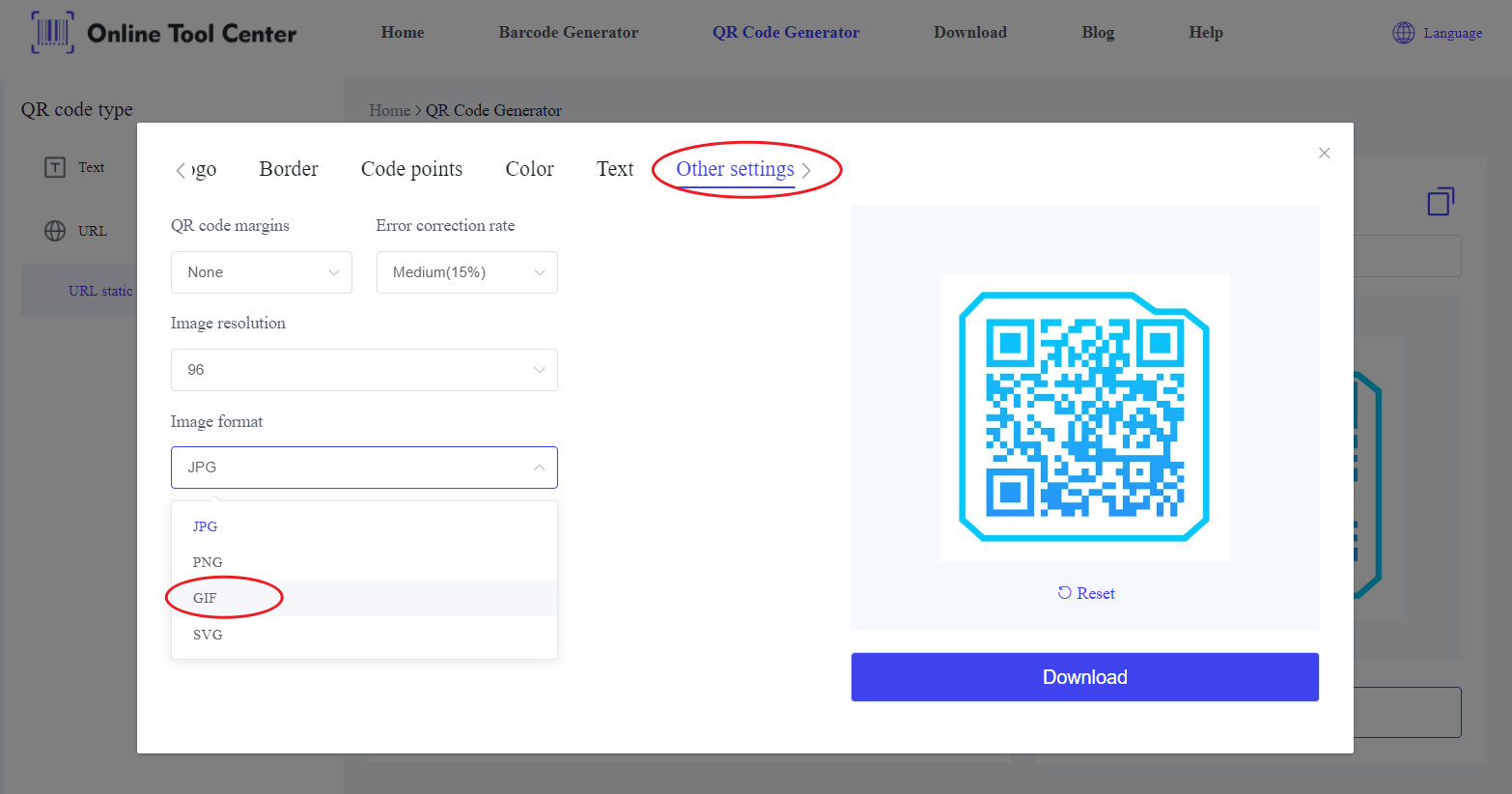What is a Bouncing QR Code and Why It Matters?
QR codes have become a staple in digital marketing, offering a quick and easy way for users to access information.
However, the static nature of traditional QR codes sometimes fails to capture attention in a crowded visual environment. Enter the bouncing QR code, a dynamic twist on the traditional QR code designed to engage and entice users more effectively.

Image Source: bouncingcode.com
A bouncing QR code is exactly what it sounds like a QR code that moves or "bounces" within a designated space, such as a digital screen or an advertisement.
This movement leverages the human eye's natural attraction to motion, making the QR code more noticeable and increasing the likelihood of interaction.
The concept gained widespread attention after Coinbase's 2022 Super Bowl ad, which featured a QR code bouncing across a screen for 60 seconds.
This innovative approach not only answered the question of what was the bouncing QR code but also demonstrated its potential to drive massive user engagement.
How Does a Bouncing QR Code Work?
At its core, a bouncing QR code is an animated graphic that shifts position on a display. The code itself is the same as any other QR code in terms of the data it contains, but the key difference is the animation applied to it. Here's how it works:
1. Static QR Code Creation: The process starts with generating a standard QR code using a QR code generator. This QR code contains the data you want to share, such as a URL, contact details, or promotional content.
2. Animation Application: After creating the static QR code, it is imported into an animation software or tool that supports basic motion effects. The most common animations include a simple up-and-down bounce or a side-to-side movement.
3. Export and Integration: The animated QR code is then exported as a video file or an animated GIF, depending on where it will be displayed. This file can be integrated into digital ads, websites, or even in-store digital displays.
4. Testing: It's crucial to test the animated QR code across various devices and platforms to ensure that the animation doesn't interfere with its scannability. While the code is moving, it must still be easily scanned by any QR code reader.
Benefits of Using a Bouncing QR Code
The primary advantage of a bouncing QR code is its ability to stand out in an increasingly saturated digital environment. Here are some specific benefits:
● Increased Engagement: The motion of the code naturally attracts attention, making users more likely to notice and scan the QR code.
● Higher Conversion Rates: Because these codes are more engaging, they often lead to higher conversion rates, whether that's driving traffic to a website, increasing app downloads, or boosting product sales.
● Versatility: Bouncing QR codes can be used in various settings, from online ads to in-store displays, making them a versatile tool in your marketing arsenal.
● Modern Appeal: Using animated QR codes signals that your brand is innovative and willing to adopt new technologies to engage customers.
Technical Considerations For Bounce QR Code
While bouncing QR codes are highly effective, there are some technical considerations to keep in mind:
1. Scannability: The most critical aspect of any QR code is that it must be scannable. Excessive movement or overly complex animations can hinder the ability of QR code scanners to read the code. Always test your animated QR code on multiple devices to ensure it works correctly.
2. File Size and Format: Depending on where you plan to display your bouncing QR code, the file size and format can be important. Large video files might not be ideal for mobile ads due to slow loading times, so consider using lighter formats like GIFs for web-based implementations.

3. User Experience: While the movement is designed to attract attention, it should not be distracting or annoying. The animation should be smooth and subtle enough that it doesn't detract from the user experience.
4. Placement: Consider where the bouncing QR code will be placed. For instance, on a website, you might want to use it on a landing page where the user's attention is focused, whereas in a physical store, it might work well on digital signage near the entrance.
How to Create a Bouncing QR Code?
1. Choose an Online QR Code Generator: Start by selecting a QR code generator that allows you to create a static QR code. Ensure the generator you choose supports customization options that suit your branding needs.
2. Generate the QR Code: Input your desired data into the generator, whether it's a link, contact information, or a promotional message. Download the QR code in a high-resolution format to ensure it's clear and scannable.
3. Animate the QR Code: Import the static QR code into an animation software. Set up a simple bounce or movement effect that will draw attention without compromising the code's readability. Keep the animation subtle and avoid overly complex motions.
4. Export and Test: Once your animation is complete, export the file in the appropriate format. Test the animated QR code on different devices and under various lighting conditions to ensure optimal performance.
5. Deploy the Code: Finally, integrate your bouncing QR code into your chosen medium, whether it's an online ad, a social media post, or a digital display in a physical store. Monitor its performance using analytics tools to measure engagement and conversions.
The bouncing QR code is a powerful tool for marketers looking to increase user engagement and stand out in a crowded digital landscape.
By combining the functionality of traditional QR codes with the attention-grabbing power of animation, these dynamic codes offer a modern solution to capturing and maintaining consumer interest.
To create your own bouncing QR code, use an online QR code generator and follow the steps outlined above to ensure your code is not only eye-catching but also effective.
Whether you're running an online campaign or enhancing in-store experiences, a bouncing QR code can make a significant impact on your marketing efforts.




